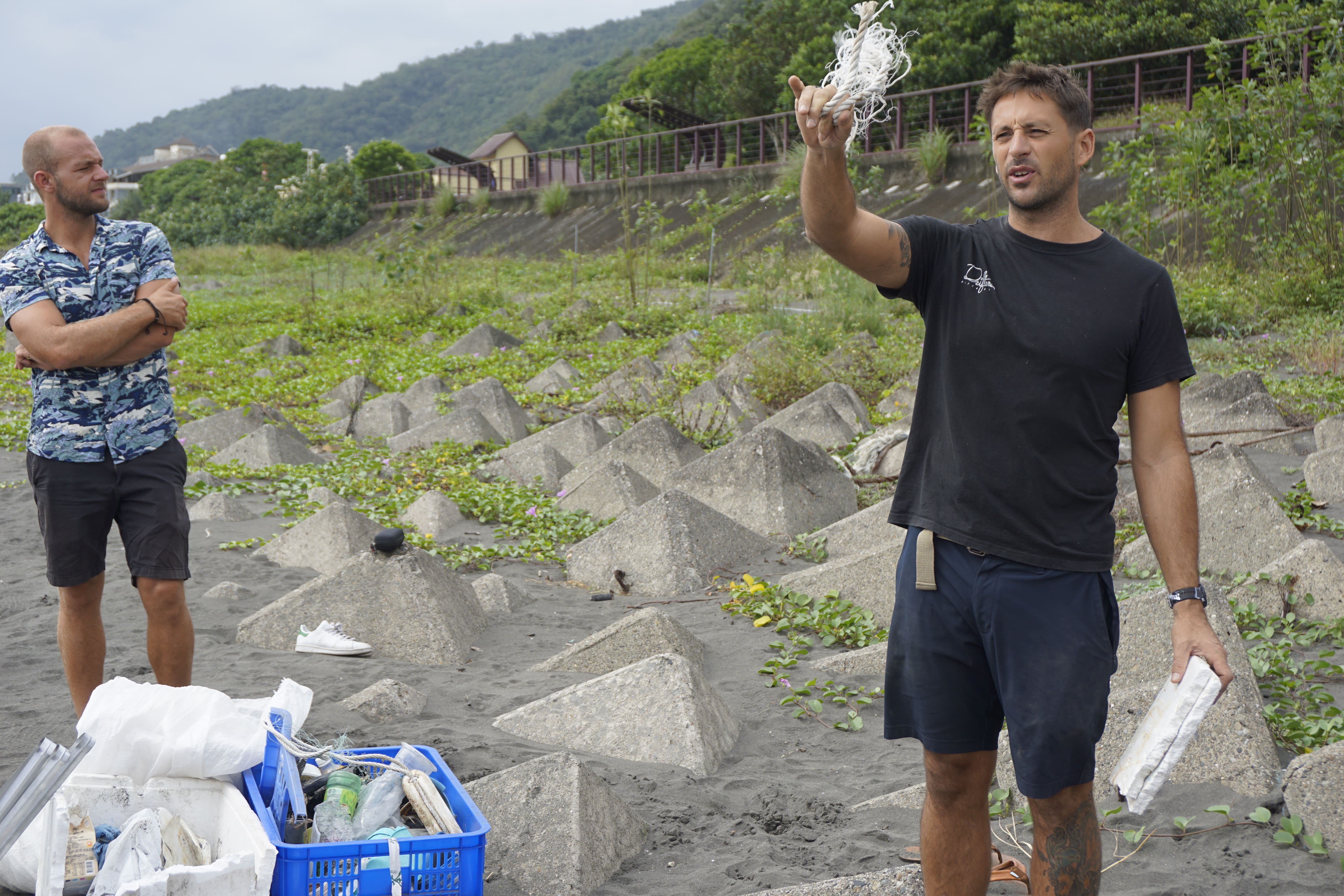
VIS partner, Garrett, explains the difference between the types of plastic for organizing to students before the beach cleanup begins.
Essential Question: Can waste create meaningful change?
TAKE ACTION TODAY MAKE THE SEA CHANGE
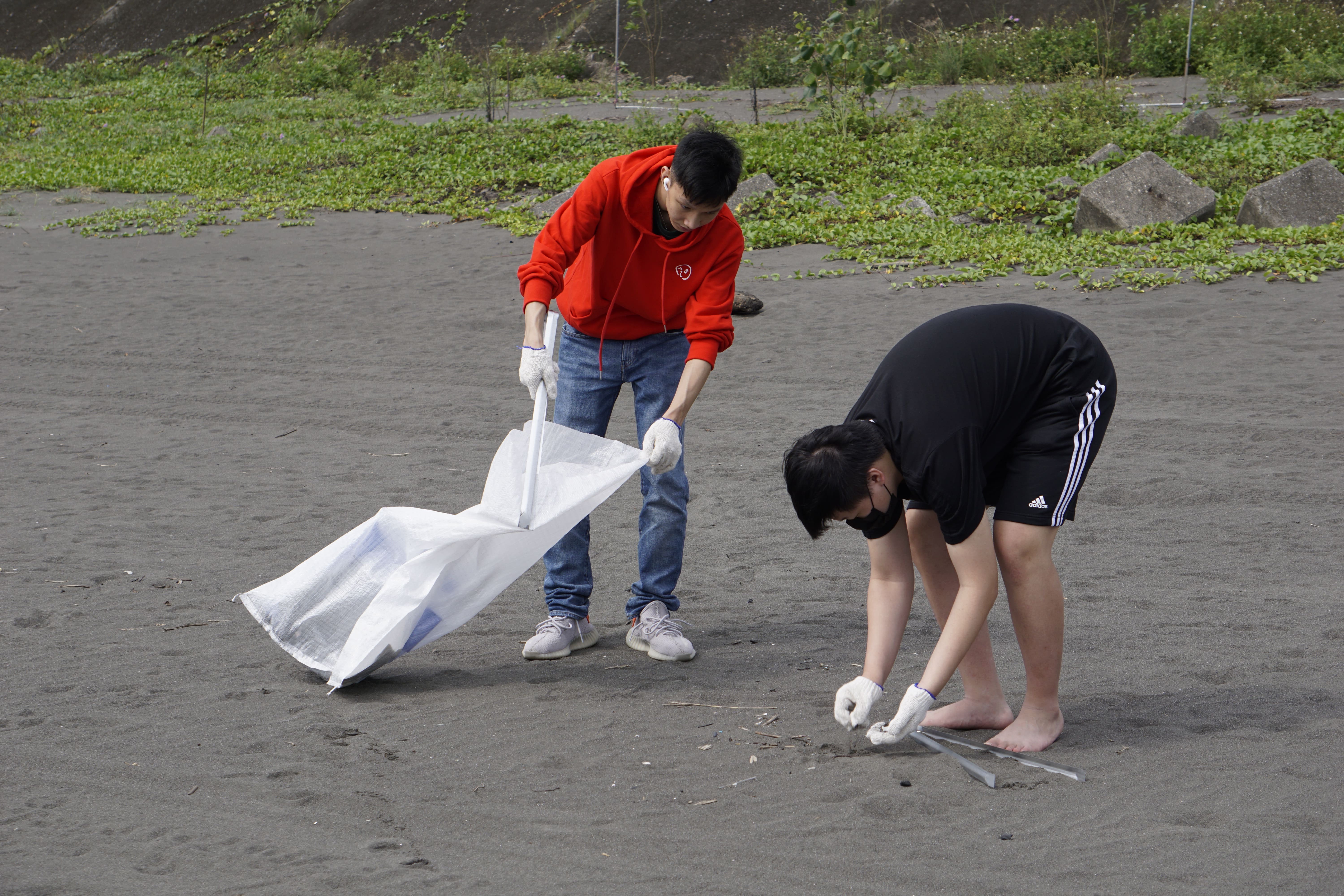
Students sort plastic and other waste they find on the beach during their beach clean up in Yilan.
The Sea Change project is a bold interdisciplinary endeavor that combines rigorous academic skills with authentic community partnerships all while bolstering sustainability and a personal connection to nature. Our goal is to source local plastic or “waste” and create products that blend art and function. Students will work in teams or “subjects” led by our expert teachers to collaborate, design, and build projects in coordination with our community partners' needs. Students think critically, analytically, and creatively to find, evaluate, and synthesize information to construct arguments, plan, design, build, and present solutions. This project aims to address the United Nations Sustainable Development Goals.
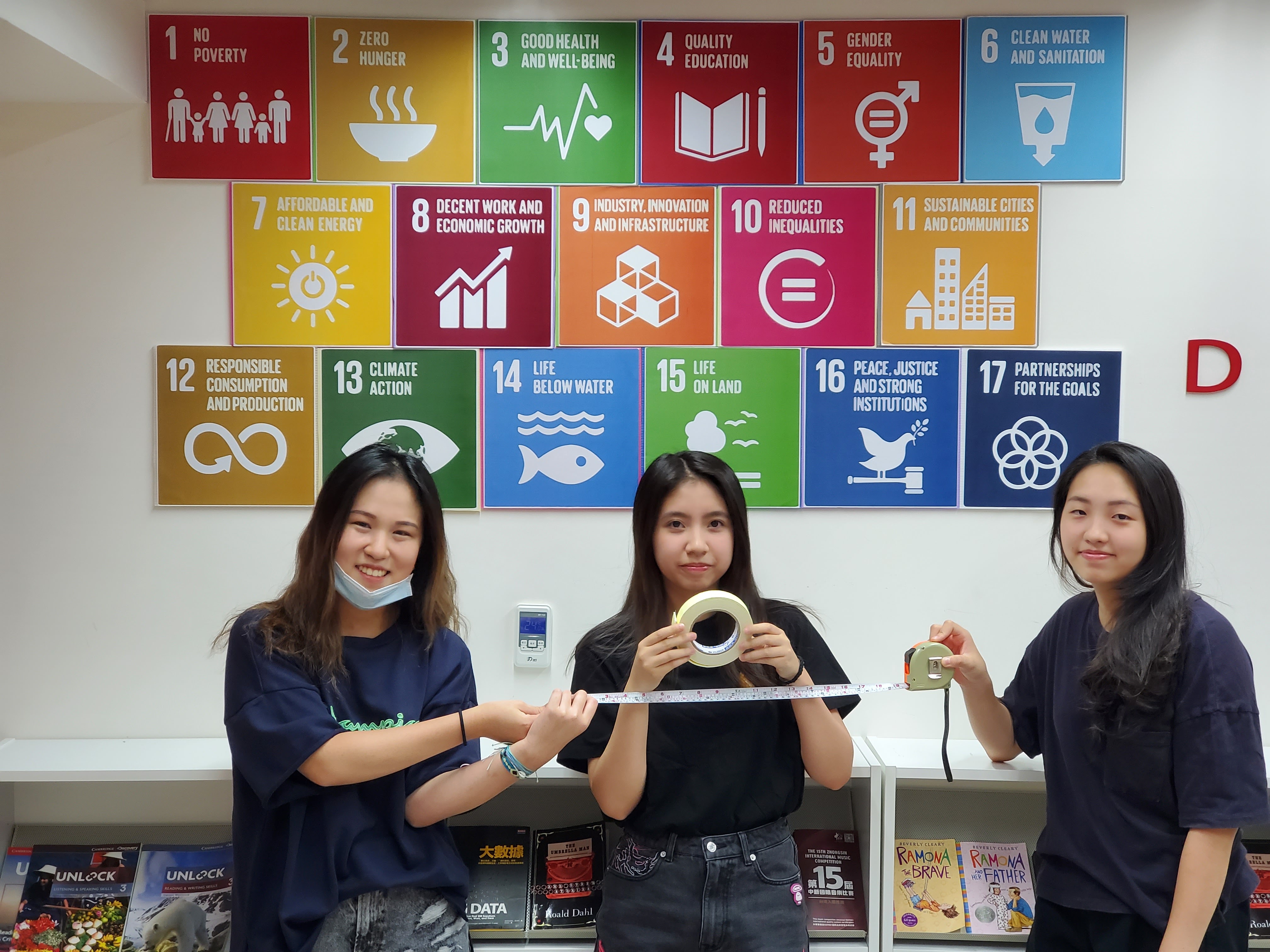
Upperclassman, Sonya, Maddy and Tina prepare for engineering class by taking measurements and getting equipment ready.
PLASTIC → SHRED → PBL → BUILD → SAVE THE WORLD
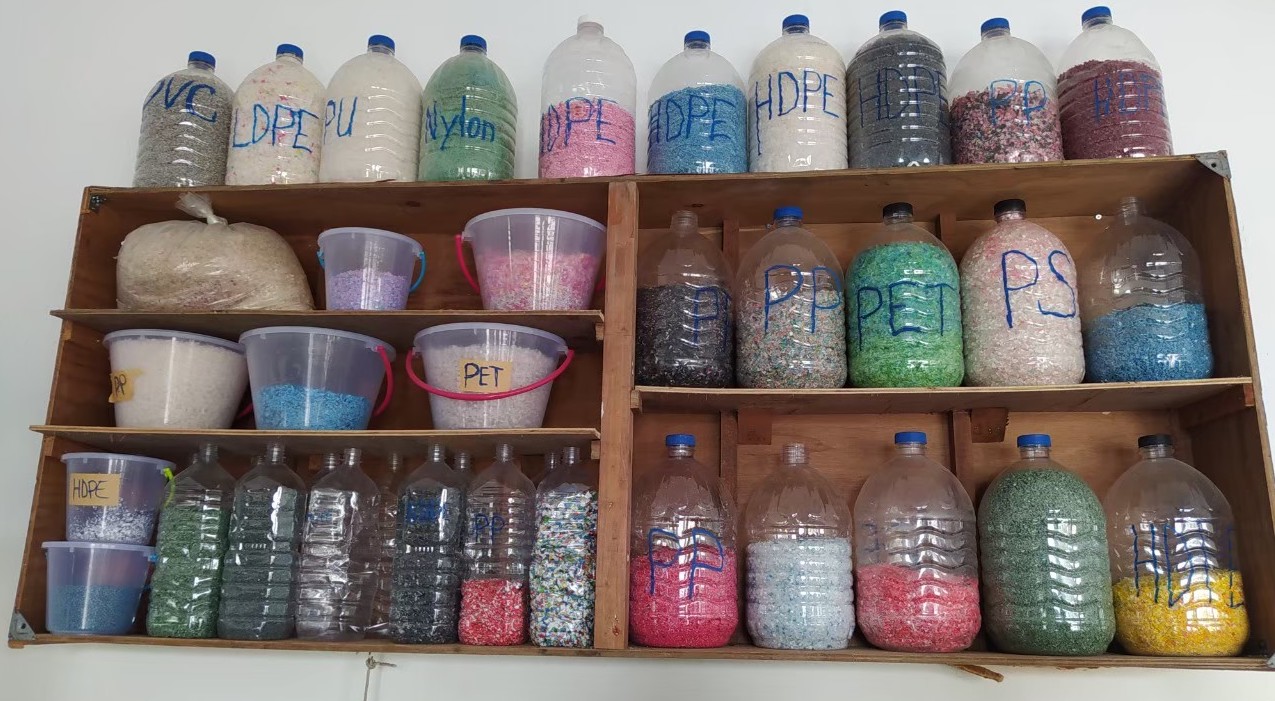
Plastic is organized by type and color at the Taiwanderful studio in Dulan, Taidong.
Taiwan has a 73% plastic recycle rate, but in reality too much trash still makes its way into either incinerators or our environment. This is the central problem that the Sea Change project will strive to solve. VIS has partnered with Taiwanderful Recycling Co. in hopes of creating meaningful change. Together they will share resources and expertise, via workshops at VIS. Together we will collect and process plastic waste while learning about Eco Education and sustainability. This plastic waste will be processed into a raw material that can be used to build wonderful projects that help our local community.
This project will be divided into “subjects”. Each subject will learn academic content while contributing to the whole project. For example:
-
Film class is making a documentary about the project, and the music class will provide the soundtrack.
-
Business class will promote the project and find community partners for sources of plastic and other community partners who need our help.
-
Engineering class will be building the plastic products while the History class defines the problem and provides a historical context about how we as humans have become so reliant on plastic.
-
Science class will be exploring the physical and chemical properties of plastic. These are just a few examples. Classes are not isolated; they will be working in collaboration with each other whenever possible.
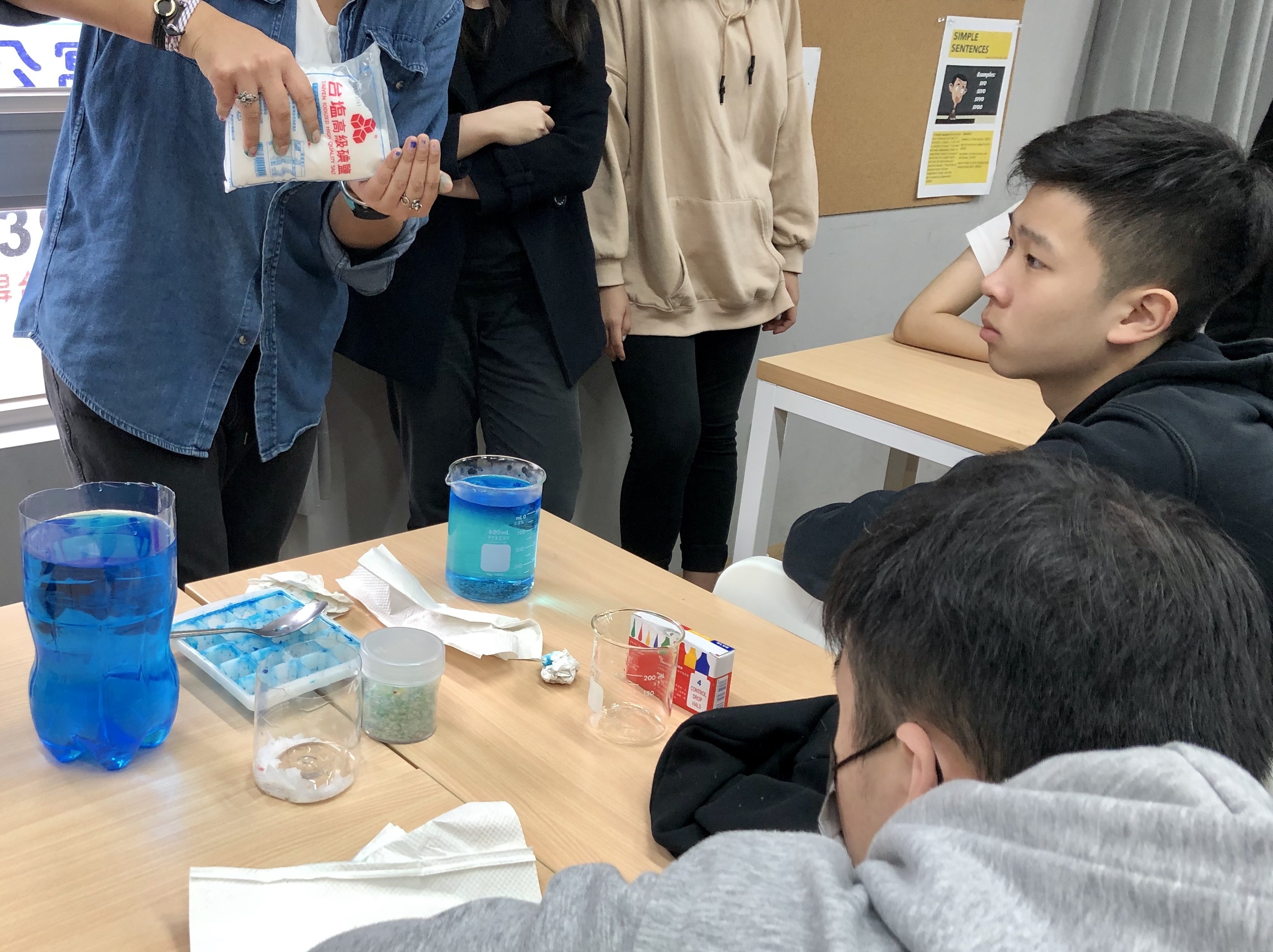
Students work with food dye, salt, and ice water to work on their experiments in biology class.
Project based Learning / VIS Design Principles
VIS design principles: personalization, adult world connection, and common intellectual mission, teacher as designer. Responding directly to the needs of students, all four principles connect to the broad mission of preparation for the adult world. Moreover, all four call for structures and practices that schools do not now routinely employ. The design principles permeate every aspect of life at VIS: the small size of the school, the openness of the facilities, the personalization through advisory, the emphasis on integrated, project-based learning, student exhibitions, and the provision of ample planning time for teacher teams during the work day.
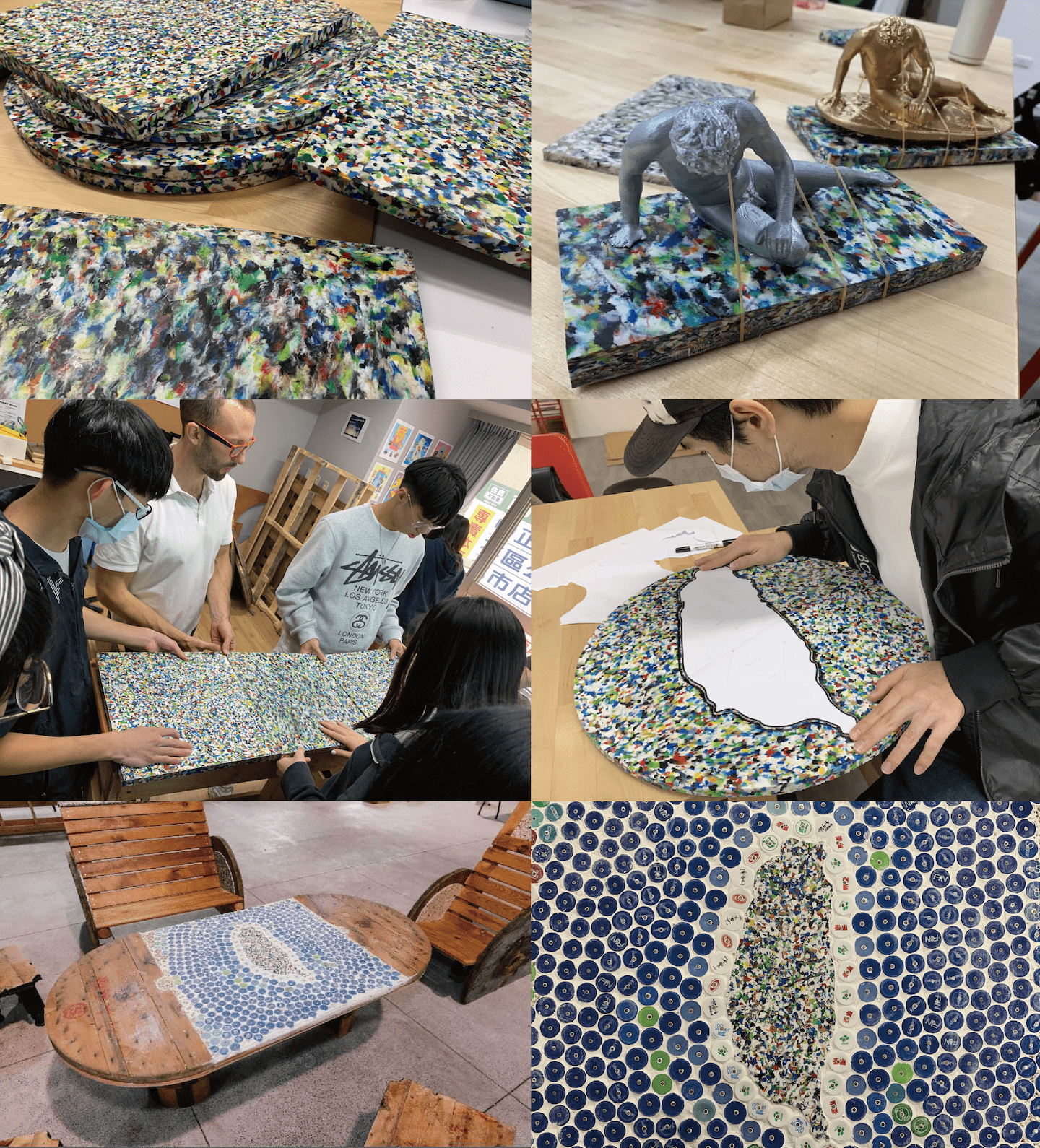
Recylced plastic, melted, and cut into different shapes can be used to create furniture, art, and countless other functions.
 VIS 國際實驗教育 高中部/國中部/小學部 G05~G12
VIS 國際實驗教育 高中部/國中部/小學部 G05~G12
